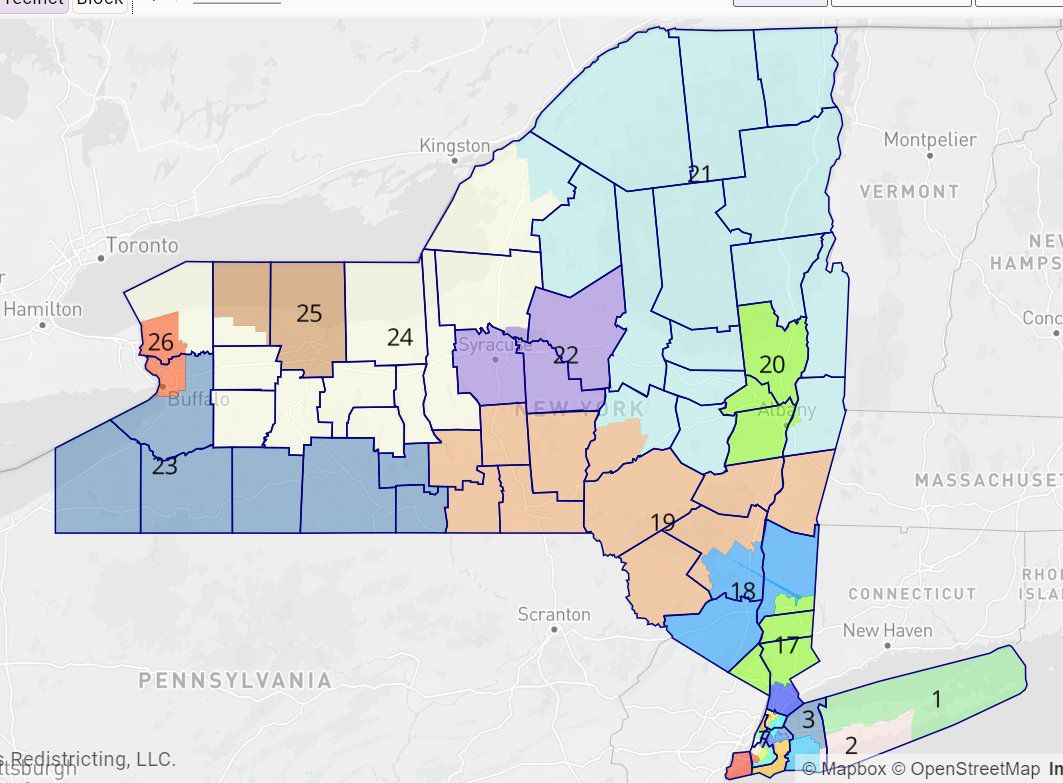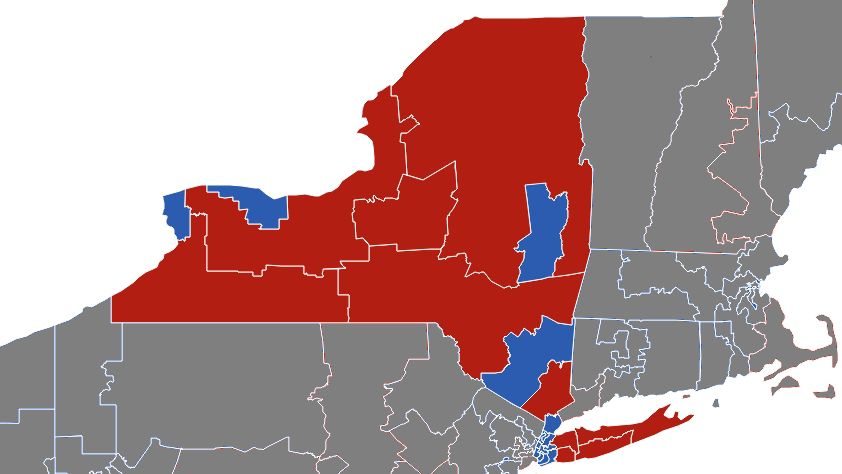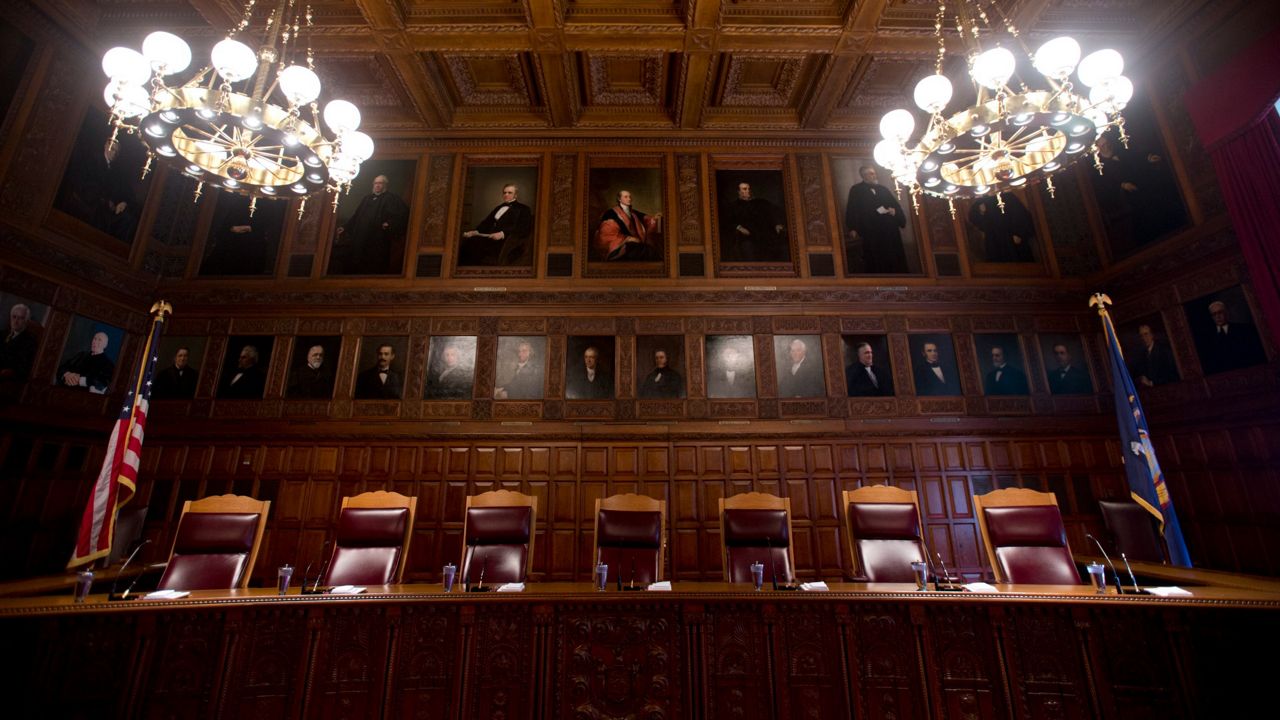For most states, the process of redistricting began with the 2020 Census, followed by months of elected leaders or political groups reconfiguring congressional and state legislative boundaries in time for the 2022 elections.
New York’s redistricting process though has been anything but routine and remains ongoing. On Wednesday, the state’s highest court — the state Court of Appeals — will begin hearing arguments — again — on whether the state’s congressional lines should — again — be redrawn.
How the court rules could have national political implications. With the lines as they are right now, New York could play a consequential role in 2024 in the control of the U.S. House of Representatives, where Republicans hold a razor-thin majority, thanks in part to a string of GOP victories in New York in 2022.
How did we get here? It’s a long story.
The Independent Redistricting Commission
The story of the current redistricting cycle begins almost 10 years ago in 2014. That year, voters approved a constitutional amendment that would initiate a new process of redistricting, taking it initially out of the sole hands of the state Legislature and assigning the task to the newly created Independent Redistricting Commission.
After the Census each decade, the commission draws up new maps and submit them to the Legislature for approval.
Following the 2020 Census, the Independent Redistricting Commission went to work on its inaugural map-drawing in 2021. It did not go well.
Democrats and Republicans on the commission failed to agree on a set of maps for new House, state Assembly and state Senate lines to submit to the Legislature and instead released two competing versions.
As the 2014 constitutional amendment stipulates, if the commission doesn’t submit maps to the Legislature by a certain deadline, the Legislature will draw the maps themselves.
And so, the Legislature, where Democrats hold supermajorities and therefore controlled the entire process, passed their own version of district maps in February 2022, which were criticized heavily at the time by good government groups and Republicans as being heavily gerrymandered to benefit Democratic candidates. Democrats countered that argument by saying the maps represented the state’s overall Democratic electorate. According to the latest numbers, there are 6.5 million registered Democrats in New York, 2.8 million registered independents and 2.7 million Republicans.
Republicans take the maps to the courts
Two days after Gov. Kathy Hochul signed the new maps into law, Republicans filed a lawsuit against them.
For the next few weeks, a Steuben County judge heard arguments on the case, and on March 31, 2022, rejected the Democratic-drawn maps.
Democrats took the issue to the state Court of Appeals, a seven-member panel that has been appointed entirely by Democratic governors.
In April, in a 4-3 decision, the Court of Appeals struck down the Democratic-drawn maps, ruling them as procedurally unconstitutional and “drawn with impermissible partisan purpose.” The court would appoint what’s known as a “special master,” appointed by a lower court, to draw the new district lines, repeating a scenario New York also underwent in the 2012 redistricting cycle.
In May, the special master released his version of the maps, which are the district lines currently in place.

The saga upended primary races for Congress, which were then just two months away, and with so many versions of maps drawn, some congressional candidates ended up announcing up to three times what district they were running in, causing confusion for campaigns and voters.
And it was a consequential outcome by November.
While still taking the House of Representatives, Republicans underperformed nationwide. But in New York, the GOP did exceedingly well, winning five out of the state’s six competitive House races, flipping four seats previously held by Democrats in the process, including the House Democrats’ campaign chief.
Since the GOP won a five-seat majority in the House, those four flips proved instrumental to the current political landscape in Washington, D.C

A change in the court
Just three months after the New York Court of Appeals rejected the Democrat-drawn maps, Chief Judge Janet DiFiore announced she would step down from the bench. The deciding vote, DiFiore wrote the majority opinion in that case, which angered the state’s progressives. Democratic U.S. Rep. Hakeem Jeffries, who is now House minority leader, simply said “good riddance” to DiFiore’s retirement announcement.
Echoing that sentiment, Democrats in the state Senate rejected Gov. Kathy Hochul’s first nominee to replace DiFiore as many members considered him too conservative.
Hochul then nominated Rowan Wilson, an associate justice on the court who had dissented in the redistricting case. Wilson was confirmed in April 2023.
Democrats take the maps to the courts
That same month, a group of voters filed a challenge to the congressional maps drawn by the special master a year earlier, arguing the current lines must not remain in effect until 2030, when the next Census would be taken, and that the Independent Redistricting Commission has significant time to generate new maps and follow the process outlined in the state Constitution.
In July, a state appellate court sided with the Democrats, and a Republican appeal meant the issue would once again end up in the state Court of Appeals.
In September, the Court of Appeals said the Independent Redistricting Commission could start to work on new lines while litigation progresses, but the current maps for now would remain in place.
Should the court side with Republicans, the current maps will likely remain in place for the next decade. Should the court side with Democrats, the redistricting process will start all over again.
When asked if the commission would have more luck this time around, its chair, Ken Jenkins, seemed optimistic when he spoke to Capital Tonight in early October.
"I think everyone understands now that there’s a requirement for there to be compromise, to work together,” Jenkins said. “And I’m not sure that was the case when things were first going on.”
The court begins hearing arguments Wednesday in Buffalo. In the days leading up to now, Republicans in the New York House delegation and other powerful GOP officials crisscrossed the region to vocalize their opposition to Democrats’ latest efforts in this matter.
Lee Zeldin, the former congressman who was the 2022 GOP gubernatorial nominee, told Capital Tonight a few weeks ago that the court is “getting used” and that “on the merit, clear as day, the lines we currently have should stay.”
The enormous political stakes in the court’s decision, with 2024 elections right around the corner, has many eyes on this case.
A decision by the Court of Appeals is expected by the middle to end of December.
Luke Parsnow - New York State Politics Digital Content Producer
Luke Parsnow is the New York state politics digital content writer and producer at Spectrum News 1. He is an award-winning writer and political columnist and previously worked for CNYCentral in Syracuse and The Post-Star in Glens Falls, New York.









